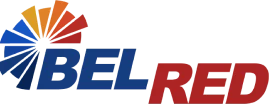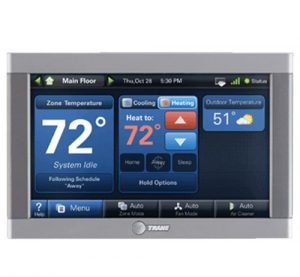In the comfort of your home in Everett, WA, an efficiently functioning furnace is essential, especially during the colder months. However, many homeowners encounter a common but perplexing issue: low airflow in their furnaces.
This problem not only impacts the comfort level in your home but can also lead to higher energy bills and potential system damage. In this article, we’ll explore the causes of low airflow in furnaces, understand why it’s a critical issue, and discuss effective solutions.
How to Identify Low Furnace Airflow
Recognizing low airflow in your furnace is essential for maintaining a comfortable and efficient home heating system. Here are some straightforward indicators to help you identify if you have low airflow in your furnace:
- Weak Air Output from Vents: Check the air coming out of your vents. If it feels weaker than usual, it’s a sign that the airflow might be low.
- Unusual Noises from Ducts: Listen for any strange sounds like whistling, rattling, or banging coming from the ductwork.
- Inconsistent Room Temperatures: Pay attention to whether certain rooms or spaces in your house feel cooler than the rest, as this can signal uneven distribution of airflow.
- Frequent Furnace Cycling: Pay attention to how often your furnace turns on and off. More frequent cycling than normal can suggest airflow issues.
- Visible Dust Buildup Around Vents: Examine the areas around your vents. An unusual amount of dust accumulation can indicate reduced airflow.
- Cold Spots Near Vents: Feel around the vents in your home. If there are noticeable cold spots, it could mean that the air isn’t flowing properly.
- Excessive Humidity or Condensation: Observe if there’s increased humidity or condensation, particularly on windows, as this can be a sign of poor air circulation.
Noticing these indicators can alert you to times when your furnace’s airflow isn’t performing as it should. Early detection of such issues is crucial for maintaining a cozy home environment and the efficient operation of your heating system.
Causes Behind Low Furnace Airflow
Understanding the causes of low airflow in your furnace is key to recognizing and addressing heating issues in your home. Here’s an expanded look at common causes:
Clogged Air Filters
Over time, air filters in your furnace can become clogged with an accumulation of dust, dirt, pet dander, and other airborne particles. As these filters trap more and more debris, they can become obstructed. This blockage hinders the movement of air, resulting in reduced airflow through the system. The buildup on the filters can become significant, especially if they are not changed regularly. This makes it harder for air to pass through and circulate effectively throughout your home.
Ductwork Issues
The ductwork in your home serves as the channel through which warm air travels from the furnace to various rooms. Several issues can arise within these ducts, including leaks, holes, or disconnections, all of which can lead to a decrease in airflow.
Apart from physical damage, ductwork can also suffer from poor design or installation. This leads to inefficient air movement and distribution. Issues like narrow ducts, sharp bends, or lengthy duct runs can impede the smooth flow of air. These contribute to lower airflow and uneven heating.
Fan Motor and Blower Issues
The fan motor and blower are central components of your furnace, responsible for pushing air through the heat exchanger and then into your home. Any problems with these components – such as motor malfunctions, wear and tear of blower parts, or issues with fan belts – can lead to a reduction in airflow.
The fan motor and blower need to function optimally to maintain consistent airflow. Any impairment in these parts can hinder the furnace’s ability to circulate air effectively.
Thermostat Malfunctions
In some cases, the issue with airflow might not originate from the furnace itself but from the thermostat. A thermostat that isn’t working correctly may struggle to effectively control the heating system.
This can manifest as incorrect signaling to the furnace, causing it to run inadequately or not respond to the actual heating needs of your home. Faulty thermostats might misread the indoor temperature or have issues with the connection to the furnace. This leads to poor regulation of airflow.
Oversized or Undersized Furnace
The size of your furnace is crucial for efficient operation. An oversized furnace can heat the house quickly but often leads to short cycling – turning on and off frequently, which doesn’t allow for adequate air circulation.
Conversely, an undersized furnace might struggle to produce enough heat and airflow to warm your home effectively. In either case, such situations can lead to diminished airflow, affecting both the efficiency and the comfort provided by your heating system.
Risks of Ignoring Low Airflow in Your Furnace
Ignoring low airflow in your furnace can lead to several significant issues, impacting both your comfort and safety. Here’s a concise overview of the key risks associated with this problem:
- Elevated Energy Bills: Restricted airflow forces your furnace to work harder, increasing energy consumption and costs.
- Inconsistent Home Heating: Low airflow can lead to uneven heating in different rooms, causing discomfort.
- Accelerated Furnace Wear: Extra strain from low airflow speeds up wear and tear on furnace components, leading to more frequent repairs.
- Overheating and System Damage: Inadequate airflow can cause the furnace to overheat, risking system failure and costly replacements.
- Poor Indoor Air Quality: Reduced air circulation diminishes air quality, impacting those with allergies or respiratory issues.
- Safety Hazards: Extreme cases of overheating can pose a fire hazard, and issues like cracked heat exchangers can lead to dangerous gas leaks.
Solutions for Low Airflow in Your Furnace
Addressing low airflow in your furnace is key to maintaining its efficiency and prolonging its life. Here are some steps you can take, ranging from simple tasks to those that might require professional help:
Regular Filter Replacement
Frequently replacing the air filter in your furnace is a simple yet highly effective method to ensure consistent airflow. It’s typically recommended to change the filter every 90 days, but this might vary depending on factors like pet ownership or high dust levels in your area. A clean filter ensures that airflow isn’t obstructed by dust and debris, helping your furnace operate more efficiently.
Ductwork Inspection and Repair
For ductwork, professional inspection and repair are essential. As time passes, ducts may acquire leaks or obstructions that hinder the flow of air. Having experts like those at BelRed Energy Solutions inspect and repair any issues can significantly improve the efficiency of your heating system. Well-maintained ductwork is crucial for ensuring that air can flow freely and evenly throughout your home.
Routine Furnace Maintenance
Routine maintenance of your furnace by skilled technicians is also important. They can identify and fix issues with key components such as the fan motor and blower, which are vital for effective airflow. Routine inspections can help avert small issues from escalating into significant problems.
Thermostat Upgrades
Switching to a smart thermostat can significantly improve the efficiency of your furnace. Smart thermostats provide more accurate control over your heating system, optimizing furnace operation based on real-time data. This can lead to improved airflow and lower energy costs, as the furnace operates more efficiently.
Assessing Furnace Size
It is essential to verify that your furnace is appropriately sized for your home. A furnace that’s too large or too small can lead to a variety of issues, including low airflow. Professional evaluation of your furnace size in relation to your home’s heating requirements can ensure that your system is appropriately suited to your needs, providing efficient heating and proper airflow.
Ensuring Optimal Furnace Performance with BelRed Energy Solutions
Tackling the issue of low airflow in your furnace goes beyond just enhancing comfort; it’s vital for maintaining the system’s efficiency, safety, and long-term durability. By taking proactive steps such as regular filter replacement, ductwork maintenance, and considering upgrades like smart thermostats, you can significantly enhance the performance of your furnace.
However, when it comes to more complex issues like assessing the size of your furnace or handling intricate furnace repairs, professional assistance becomes indispensable. This is where BelRed Energy Solutions steps in. With our comprehensive furnace services, including expert repairs, installations, and routine maintenance or tune-ups, we are committed to ensuring your furnace operates at its best.
Our team of experienced technicians possesses a deep well of knowledge and expertise, ensuring that every facet of your furnace receives meticulous and professional attention. Whether you’re looking to troubleshoot a specific issue or seeking regular maintenance to prevent future problems, BelRed Energy Solutions is here to provide top-notch service.
Avoid being left out in the cold due to furnace problems. Reach out to BelRed Energy Solutions at (855) 345-6161 to set up a consultation. Our dedicated team is ready to enhance the comfort and efficiency of your home with reliable, high-quality furnace solutions. Remember, when it comes to your furnace’s health and performance, BelRed Energy Solutions is the name you can trust.







